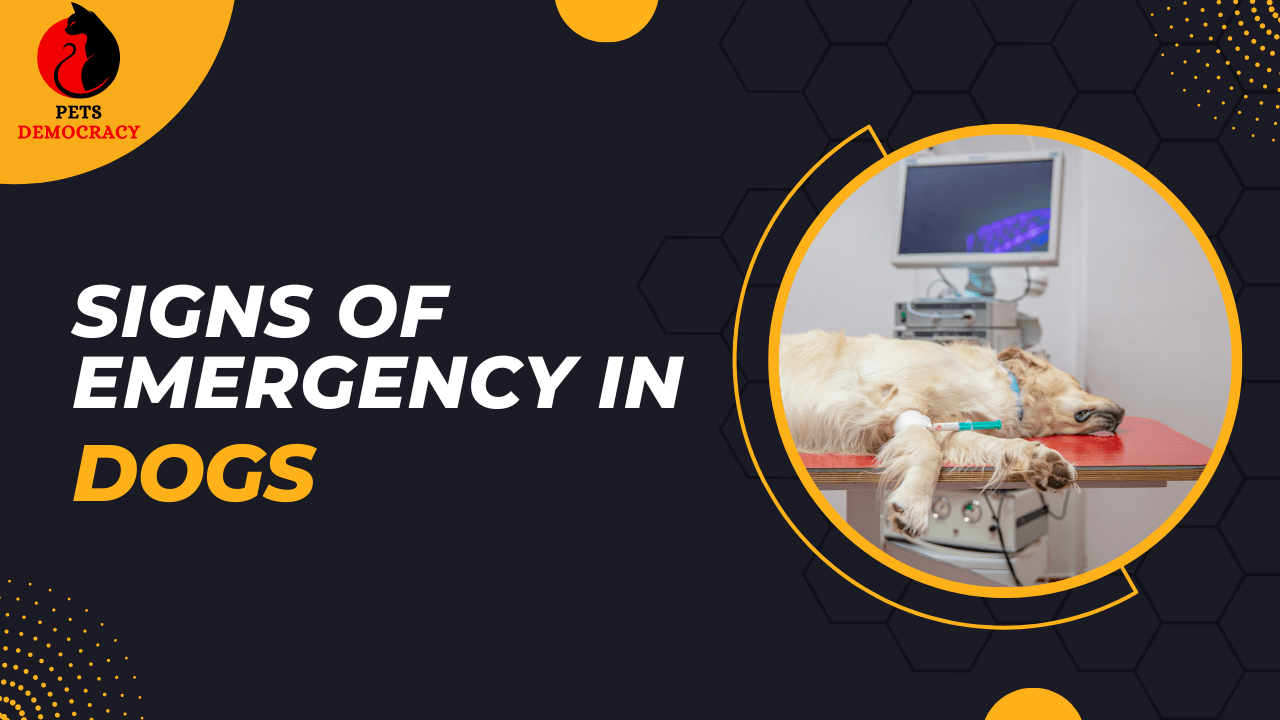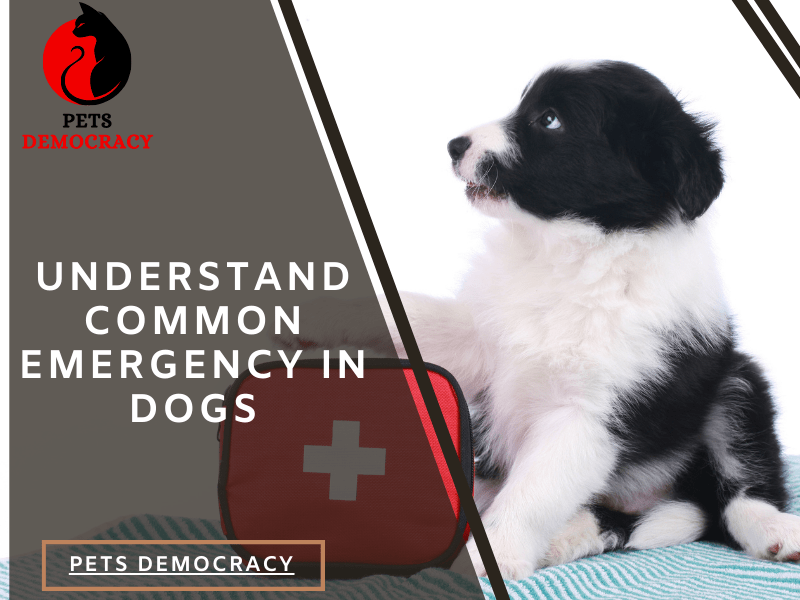
Recognizing Signs of Emergency in Dogs
In this comprehensive guide, we’ll delve into the various signs of emergency in dogs, equipping you with the knowledge to identify urgent health issues and take appropriate action.
Emergencies can strike when we least expect them, and when it comes to our furry companions, being prepared to recognize the signs of a crisis is crucial.
As responsible pet owners, understanding what constitutes an emergency for our dogs empowers us to act swiftly, potentially saving their lives.
Understanding Common Emergency in Dogs

Gastric Dilatation-Volvulus (GDV)
Gastric dilatation-volvulus, commonly known as bloat, is a life-threatening condition that requires immediate veterinary attention. Dogs experiencing GDV may exhibit symptoms such as:
- Rapid Swelling of the Abdomen: An enlarged, distended abdomen is a telltale sign of bloat.
- Unproductive Retching: Attempts to vomit without producing anything.
- Restlessness and Discomfort: Agitation and pacing, are indicative of severe abdominal pain.
Recognizing Symptoms of Poisoning
Toxic Ingestion
Dogs are inherently inquisitive animals who frequently use their tongues and noses to investigate their surroundings. Unfortunately, this curiosity can lead to accidental ingestion of toxic substances. Signs of poisoning in dogs include:
- Vomiting and Diarrhea: Sudden onset of vomiting or diarrhea, often accompanied by lethargy.
- Excessive Drooling: Increased salivation or foaming at the mouth.
- Weakness and Collapse: Loss of coordination, weakness, or collapse are severe symptoms requiring immediate attention.
Identifying Traumatic Injuries
Hit by Car
Being struck by a vehicle is a traumatic event for any dog and necessitates urgent medical intervention. Look out for these signs if your dog has been hit by a car:
- Visible Injuries: Wounds, lacerations, or broken bones may be apparent.
- Difficulty Breathing: Labored breathing or shallow respirations could indicate internal injuries.
- Shock: Pale gums, rapid heartbeat, and cold extremities are signs of shock and require immediate attention.
Responding to Respiratory Distress
Choking
Choking is a frightening experience for both dogs and their owners, often requiring quick action to dislodge the obstruction. Signs of choking in dogs include:
- Pawing at the Mouth: Frantic attempts to paw at the mouth or throat.
- Gagging and Retching: Unproductive attempts to cough or clear the airway.
- Blue Tongue or Gums: Cyanosis, or bluish discoloration of the tongue or gums, indicates oxygen deprivation and requires immediate intervention.
Dealing with Heatstroke
Heat Exhaustion
Dogs are susceptible to heatstroke, especially in hot climates or during vigorous exercise. Recognizing the signs of heat exhaustion is essential for preventing serious complications:
- Excessive Panting: Rapid, shallow breathing and excessive panting.
- Weakness and Collapse: Inability to stand or walk, accompanied by lethargy.
- Vomiting and Diarrhea: Gastrointestinal upset is common in heatstroke cases.
FAQs about Signs of Emergency in Dogs
Q: How can I tell if my dog is in pain?
Signs of pain in dogs include whining, whimpering, restlessness, and changes in behavior or posture. If you suspect your dog is in pain, seek veterinary attention promptly.
Q: What should I do if my dog ingests a toxic substance?
If you suspect your dog has ingested something toxic, contact your veterinarian or a pet poison helpline immediately. Do not induce vomiting unless instructed to do so by a professional.
Q: Is it safe to administer human medications to emergency in dogs?
No, human medications can be toxic to dogs and should never be administered without veterinary guidance. Always consult a veterinarian before giving any medication to your dog.
Q: How can I prevent emergencies in my dog?
While some emergencies are unavoidable, many can be prevented through responsible pet ownership. Keep hazardous substances out of reach, supervise your dog during outdoor activities, and ensure they receive regular veterinary care.
Q: What should I include in a pet first aid kit?
A pet first aid kit should contain essentials such as bandages, gauze pads, antiseptic wipes, tweezers, and a pet-specific first aid manual. Be sure to familiarize yourself with its contents and how to use them in an emergency.
Conclusion
Being able to recognize the signs of emergency in dogs is paramount for every pet owner. From gastric dilatation-volvulus to heatstroke, understanding the symptoms of common emergencies empowers you to take swift and appropriate action to ensure your dog’s health and safety.
By familiarizing yourself with the information provided in this guide and staying vigilant, you can be better prepared to handle emergencies in dogs and provide your canine companion with the care they need. Remember, in times of crisis, quick thinking and prompt veterinary attention can make all the difference.


